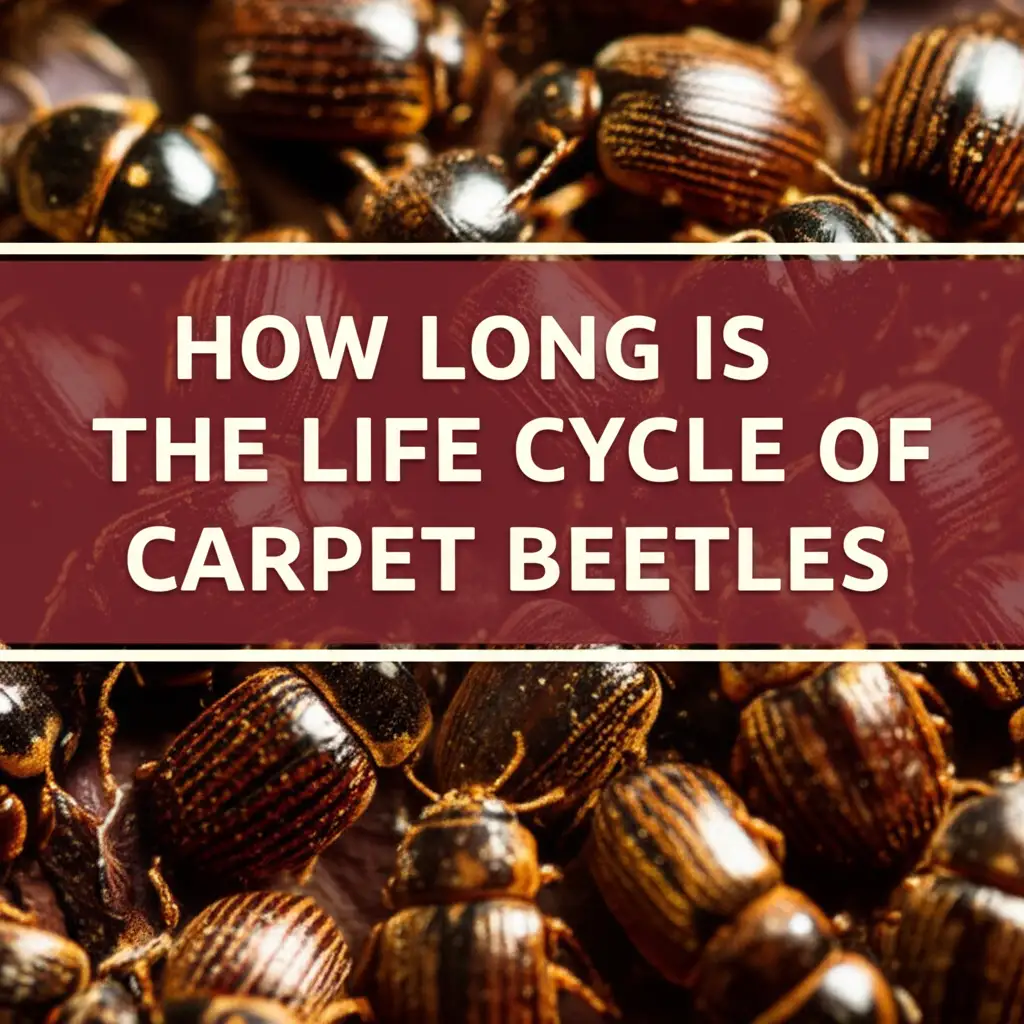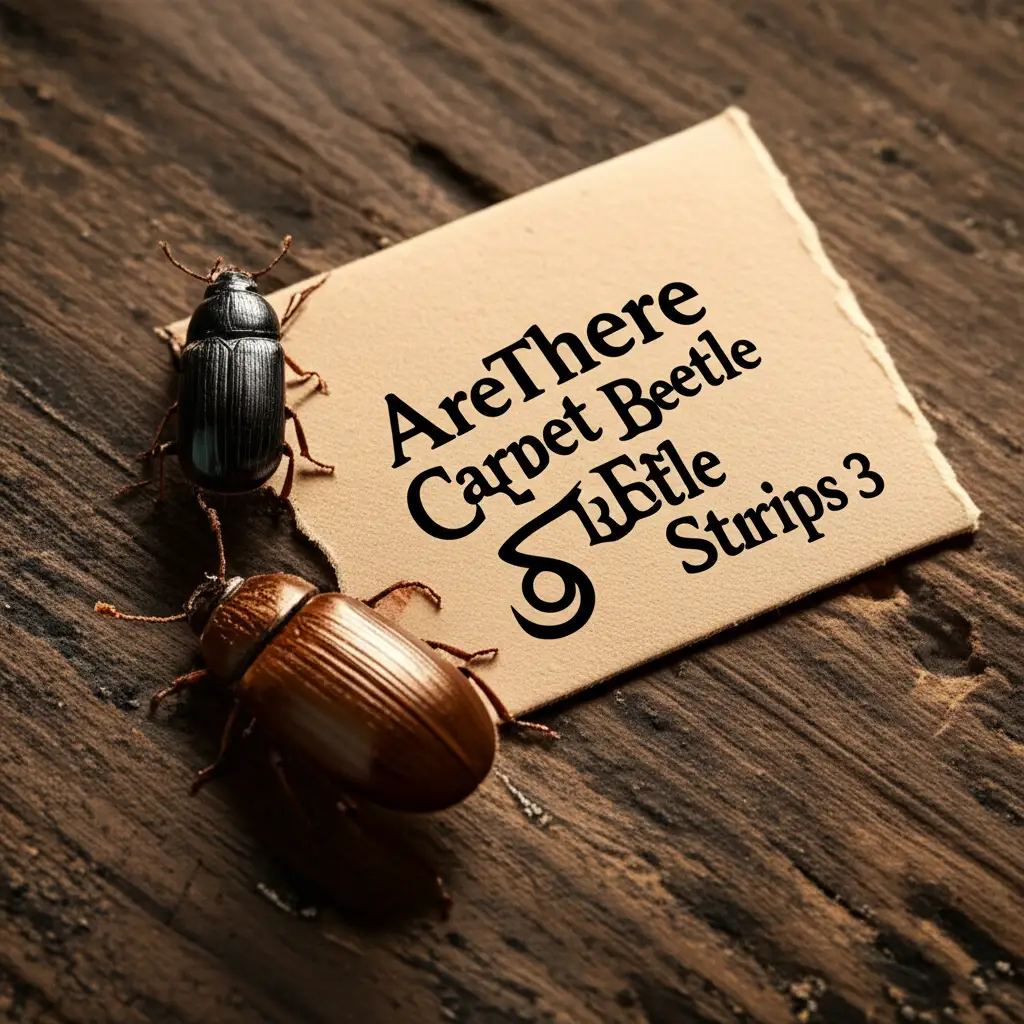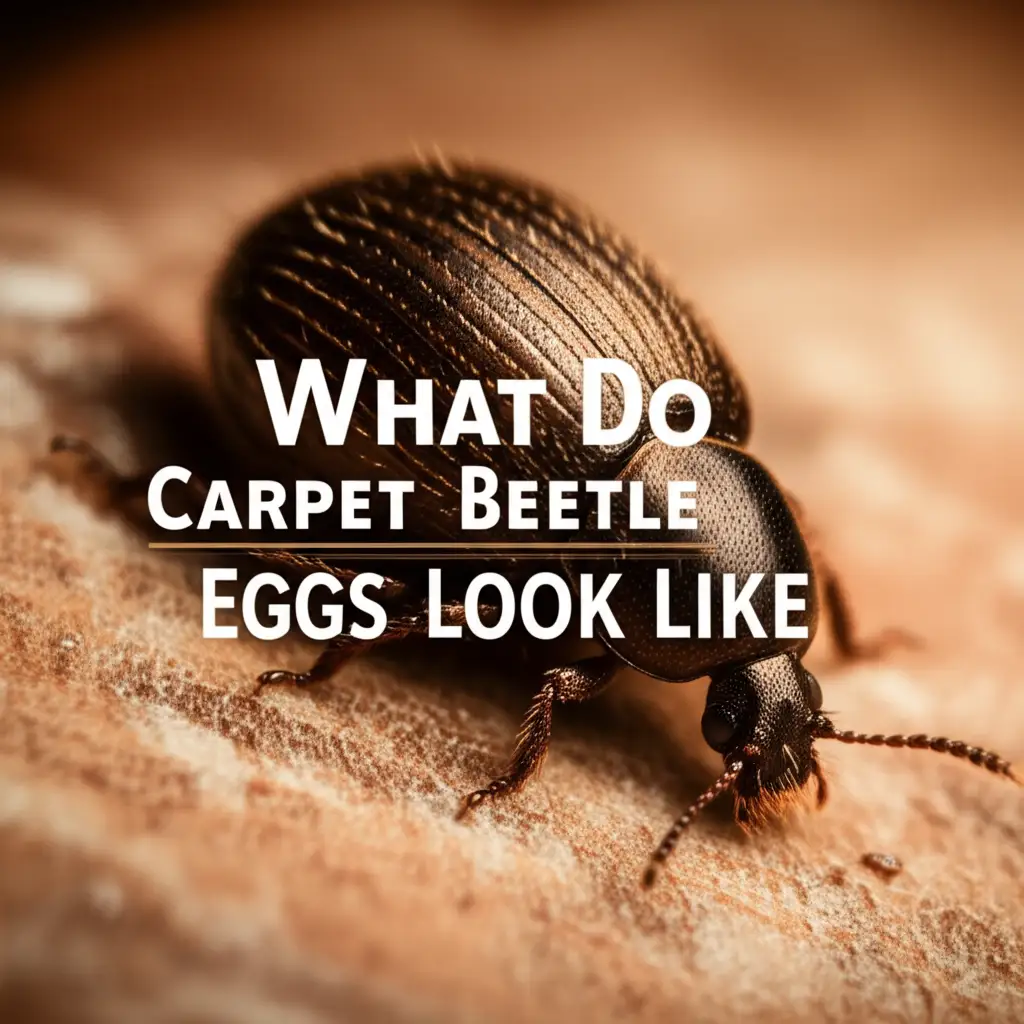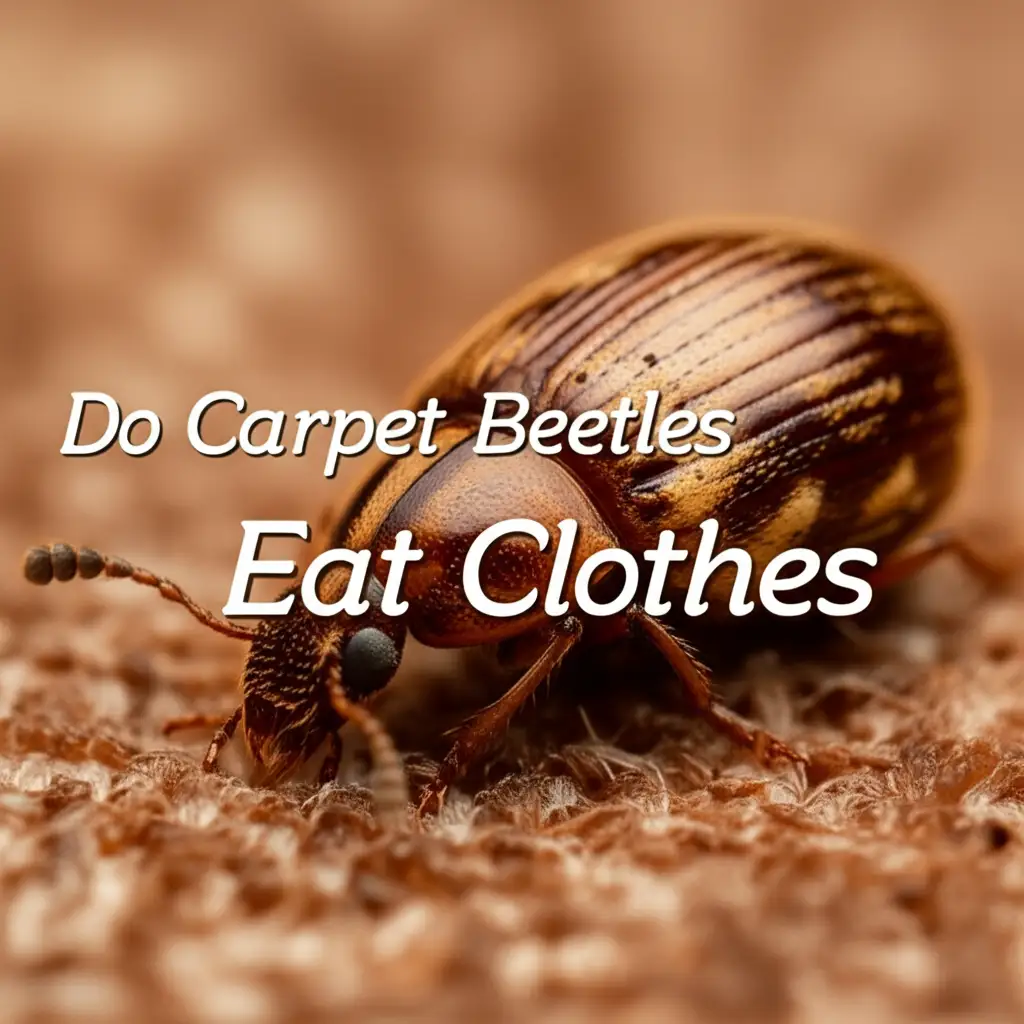· Elira Thomsen · Pest Control · 17 min read
Does Flea Spray Kill Carpet Beetles
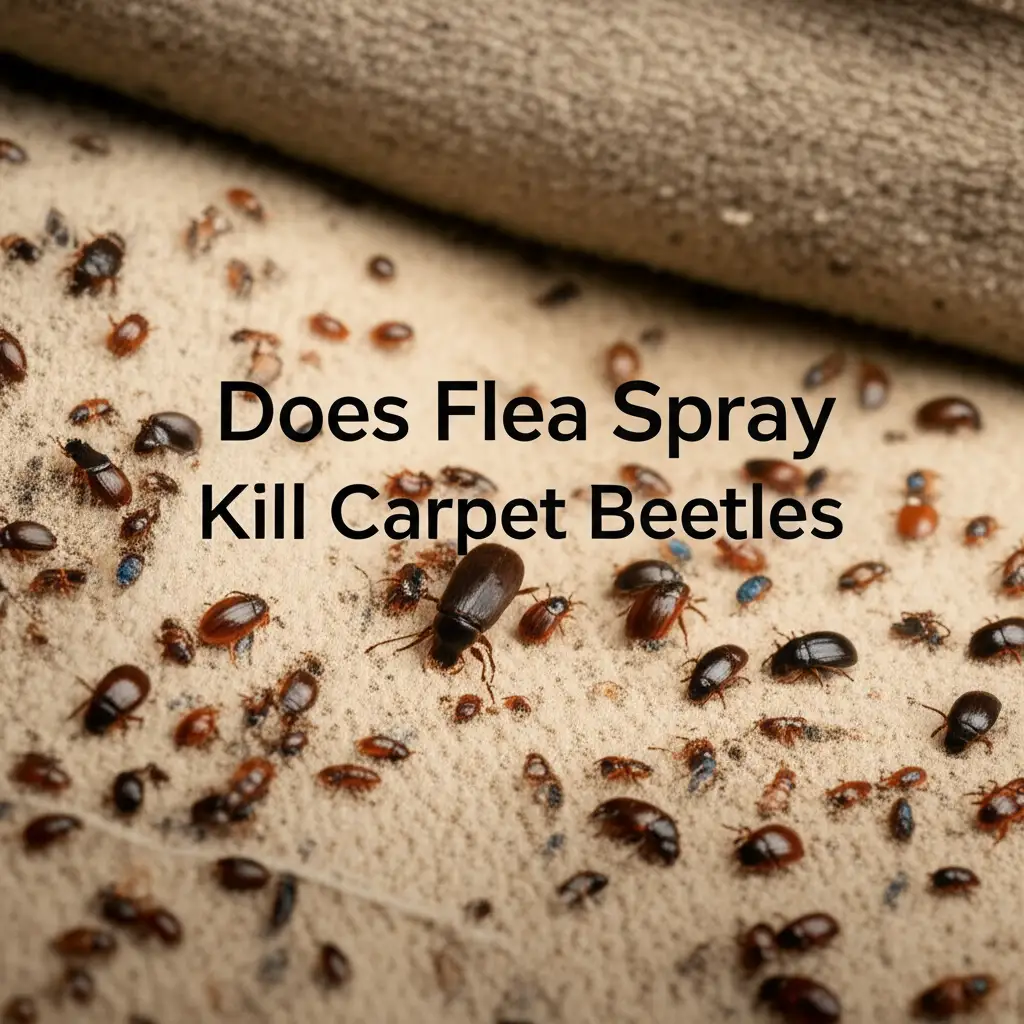
Does Flea Spray Kill Carpet Beetles? Unmasking the Truth
We often look for simple solutions when pests invade our homes. A common question arises: does flea spray kill carpet beetles? Many people wonder if a single product can handle multiple insect problems. It makes sense to consider using something already on hand.
Carpet beetles are destructive pests. They chew on fabrics, carpets, and other natural materials. Fleas, on the other hand, are biting insects that live on pets. While both are small pests, their biology differs greatly. This difference impacts how different sprays affect them.
This article explores the effectiveness of flea sprays against carpet beetles. We discuss the active ingredients in flea sprays. We also look at the life cycle and habits of carpet beetles. You will learn why flea spray is not a recommended solution. We provide effective strategies to eliminate carpet beetles. We also offer tips for preventing future infestations. You will find clear answers and actionable advice to protect your home.
Takeaway
- Flea sprays target specific flea biology and are not effective for carpet beetles.
- Carpet beetles require specialized treatments due to their different life cycle and habits.
- Thorough cleaning, professional insecticides, and prevention are key to eradication.
- Do not rely on flea spray for a carpet beetle infestation.
Does Flea Spray Kill Carpet Beetles? A Clear Answer
No, flea spray does not effectively kill carpet beetles. Flea sprays contain ingredients specifically formulated to disrupt the life cycle and nervous system of fleas. These chemicals are not potent enough or designed to eradicate carpet beetles, which have different biological vulnerabilities. Using flea spray on carpet beetles provides minimal, if any, benefit and wastes product.
Understanding Flea Sprays: Ingredients and Action
Flea sprays are common household pest control products. They target fleas specifically. These sprays contain active ingredients designed to eliminate fleas at various life stages. Understanding these ingredients helps explain why they work on fleas but not carpet beetles.
Common active ingredients in flea sprays often include pyrethrins or pyrethroids. Pyrethrins are natural insecticides derived from chrysanthemum flowers. Pyrethroids are synthetic versions of pyrethrins. Both work by attacking the nervous system of insects. They cause paralysis and death. These chemicals are fast-acting, often providing quick knockdown of fleas.
Another group of ingredients found in flea sprays is Insect Growth Regulators (IGRs). These compounds do not kill adult fleas directly. Instead, IGRs disrupt the flea’s life cycle. They prevent eggs from hatching or larvae from developing into adults. Common IGRs include methoprene and pyriproxyfen. These ingredients break the cycle of flea reproduction.
Flea sprays are formulated for specific targets. Their effectiveness relies on the unique biology of fleas. Fleas have exposed exoskeletons and specific metabolic pathways that these chemicals exploit. The sprays are also designed to be safe for use around pets and in homes when used as directed. They provide a precise solution for flea infestations.
The Nature of Carpet Beetles: Life Cycle and Habits
Carpet beetles are common household pests. They cause damage to fabrics and other materials. Understanding their life cycle and habits is essential for effective control. These insects are small but can cause significant problems. They are very different from fleas in their behavior and diet.
Carpet beetles belong to the family Dermestidae. They are known as “skin beetles.” There are several common types. These include varied carpet beetles, black carpet beetles, and furniture carpet beetles. Adult carpet beetles are small, oval-shaped, and usually dark in color. They often fly and are attracted to light. You might find them near windows or lamps.
The destructive stage of the carpet beetle is the larva. Carpet beetle larvae are small, hairy, and worm-like. They have distinct bristles or tufts of hair on their bodies. These larvae are the ones that feed on a wide range of natural materials. Their diet includes wool, silk, feathers, leather, fur, and even some plant-based fibers. They also eat dried foods, pet food, and dead insects. Larvae prefer dark, undisturbed areas. They hide under carpets, in closets, or inside upholstered furniture.
The life cycle of a carpet beetle involves four stages: egg, larva, pupa, and adult. Females lay tiny, white eggs in cracks, crevices, or directly on food sources. Eggs hatch into larvae. The larval stage is the longest and most damaging. It can last from several months to a year or more. This duration depends on food availability and environmental conditions. Larvae then pupate, transforming into adults. Adult carpet beetles emerge and seek mates. They then lay eggs, starting the cycle again.
Carpet beetles enter homes in various ways. They can come in through open doors or windows. They may hitchhike on infested items. They can also arrive on cut flowers or even on pets. Once inside, they find quiet, hidden places to live and breed. Why do we get carpet beetles often involves these common entry points and the availability of their preferred food sources within the home.
Can Flea Spray Harm Carpet Beetles? A Direct Comparison
Many wonder if a flea spray can handle carpet beetles. The answer is generally no. Flea sprays are not designed for carpet beetles. They contain specific ingredients that target fleas. These ingredients do not work effectively on carpet beetles.
Flea spray ingredients like pyrethrins and pyrethroids act on the nervous system. They cause paralysis in fleas. While these chemicals might temporarily affect a carpet beetle on direct contact, the effect is often limited. Carpet beetles have different physiologies. Their outer shells or exoskeletons may offer more protection. This protection reduces the spray’s penetration.
Insect Growth Regulators (IGRs) in flea sprays are even less effective. IGRs disrupt the life cycle of fleas. They prevent them from developing properly. Carpet beetles have a different life cycle. The IGRs for fleas do not interfere with carpet beetle growth or reproduction. This means flea spray does not stop carpet beetle eggs from hatching. It does not stop larvae from growing. It does not prevent them from becoming adults.
Furthermore, flea sprays are formulated for specific application methods. They are often applied directly to pets or pet bedding. This application method is not suitable for a widespread carpet beetle infestation. Carpet beetles hide deep within fabrics, cracks, and crevices. A surface spray like flea spray cannot reach these hidden larvae effectively. The residual effect of flea spray, if any, is also minimal against carpet beetles. It does not offer long-term protection.
To truly eliminate carpet beetles, you need targeted solutions. These solutions address their specific vulnerabilities. They also need to reach their hiding spots. Relying on flea spray for carpet beetles wastes time and money. It also delays effective treatment. Understanding this difference is crucial for successful pest management. Will home defence kill bed bugs is another example where specific pest control solutions are necessary, as general sprays might not be effective for all pests.
Why Flea Spray Is Not a Recommended Solution for Carpet Beetles
Using flea spray for carpet beetles is not recommended. There are several clear reasons for this. The main reason is that flea sprays are ineffective. They do not provide a lasting solution for carpet beetle infestations. This lack of effectiveness can lead to ongoing problems.
Firstly, flea spray ingredients do not target carpet beetles well. Flea sprays contain chemicals like pyrethrins or IGRs. These work on fleas by affecting their nervous system or growth. Carpet beetles have different biological structures. They have different life cycles. The chemicals in flea spray do not harm carpet beetles in the same way. A direct spray might stun a beetle briefly. It will not kill a widespread infestation. It certainly will not stop the larvae, which cause most damage.
Secondly, flea sprays have limited residual effects against carpet beetles. Residual effect means how long a chemical remains active. Flea sprays are designed for quick knockdown and short-term control of fleas. They do not leave a long-lasting barrier against carpet beetles. Carpet beetle larvae can continue to feed and grow after the spray dries. This means the infestation will continue to spread.
Thirdly, applying flea spray broadly in your home creates unnecessary chemical exposure. You might spray large areas of carpets or furniture. This introduces chemicals into your living space. These chemicals are not even working on the target pest. It creates potential health risks for people and pets. It does this without solving the problem. There is no benefit to using these chemicals this way.
Lastly, using flea spray instead of a proper solution wastes valuable time and money. Infestations grow quickly. Delaying effective treatment allows carpet beetle populations to increase. This leads to more damage to your belongings. You spend money on a product that does not work. This means you will need to buy effective products later anyway. It is better to use the correct method from the start.
Effective carpet beetle control requires different strategies. These strategies focus on thorough cleaning and specific insecticides. They also focus on prevention. Relying on flea spray is a common mistake. It leads to frustration and continued damage.
Effective Strategies for Eradicating Carpet Beetles
Eliminating carpet beetles requires a multi-pronged approach. You cannot rely on a single spray like flea spray. Effective strategies target both the larvae and adult beetles. They also focus on removing their food sources.
Vacuuming and Cleaning
Thorough vacuuming is your first line of defense. Use a powerful vacuum cleaner. Attachments help you reach cracks and crevices. Vacuum all carpets, rugs, and upholstered furniture. Pay special attention to areas under furniture, along baseboards, and in closets. Carpet beetle larvae hide in these dark, undisturbed places. After vacuuming, immediately empty the vacuum bag or canister. Seal it in a plastic bag. Dispose of it outside your home. This prevents larvae from escaping back into your house. Regular vacuuming helps remove eggs, larvae, and adults. It also removes their food sources like pet hair and lint.
Laundering Infested Items
Wash any infested clothing, bedding, or fabric items. Use hot water if the fabric allows. A temperature of 120°F (49°C) or higher kills carpet beetle larvae and eggs. Dry items on high heat for at least 30 minutes. For delicate items, dry cleaning is an option. Dry cleaning chemicals also kill these pests. Storing clean items in airtight containers or garment bags prevents re-infestation. Can you microwave fabric to kill carpet beetles discusses another method for specific items.
Diatomaceous Earth
Diatomaceous earth (DE) is a natural insecticide. It is made from the fossilized remains of diatoms. DE kills insects by absorbing their protective waxy layer. This causes them to dehydrate and die. Apply a thin layer of food-grade DE to affected areas. These areas include carpet edges, cracks, and crevices. Leave it for several days. Then, vacuum it up. Wear a mask when applying DE. Avoid inhaling the fine powder. DE is safe around pets and children once it settles.
Insecticide Application
For severe infestations, targeted insecticides may be necessary. Look for products specifically labeled for carpet beetles. These often contain active ingredients like permethrin or bifenthrin. Apply these insecticides to baseboards, cracks, and other hidden areas. Always read and follow the product label directions carefully. Do not spray broadly on carpets unless the product specifically allows it. Consider using an insecticide with a residual effect. This means it continues to kill pests for some time after application.
Steaming and Heat Treatment
Heat is an effective killer of carpet beetles. Steam cleaners can treat carpets and upholstered furniture. The high temperature kills eggs, larvae, and adults on contact. Does steaming a carpet clean it confirms steaming as a cleaning method. It also applies as a pest control measure. For smaller items, controlled heat treatments can work. Placing infested items in a hot dryer for 30 minutes or more can kill all life stages. For larger infestations, professional heat treatments of entire rooms might be an option.
Professional Pest Control
If your carpet beetle problem persists, professional help is wise. Pest control professionals have access to stronger treatments. They also have specialized equipment. They can identify the exact species of beetle. This helps them choose the most effective treatment plan. They can also locate hidden infestation sources you might miss. Professional intervention often provides a faster and more complete solution.
Combining these strategies ensures a comprehensive attack on carpet beetles. Consistency is key for long-term success.
Preventing Future Carpet Beetle Infestations
Once you have removed carpet beetles, prevention is essential. You want to avoid new infestations. Proactive steps help keep your home beetle-free. These actions are often simple household habits. They make your home less appealing to these pests.
Regular Cleaning and Inspection
Clean your home regularly. This includes vacuuming frequently. Pay attention to areas where lint, dust, and pet hair accumulate. These materials are food sources for carpet beetle larvae. Clean under furniture, along baseboards, and inside closets. Regularly inspect items made of natural fibers. Check wool sweaters, fur coats, and silk scarves. Look for signs of damage or larvae. What do carpet beetles hate often includes a clean and inhospitable environment.
Proper Storage of Fabrics
Store natural fiber items correctly. Before storing, ensure clothes are clean. Dirty clothes contain oils, sweat, or food stains. These attract carpet beetles. Use airtight containers or garment bags. Cedar chests or cedar blocks can also deter pests. The scent of cedar repels some insects. However, cedar is not a foolproof solution. It works best in conjunction with clean storage.
Sealing Entry Points
Carpet beetles can enter from outside. Check your windows and doors. Ensure screens are intact. Seal any cracks or gaps around windows, doors, and foundations. Repair damaged screens promptly. This prevents adult beetles from flying or crawling into your home. This step is a general pest prevention measure. It helps against many insects.
Managing Food Sources
Beyond fabrics, carpet beetles eat dried foods. Store pantry items in sealed containers. This includes pet food, cereals, and grains. Clean up food spills immediately. Do not leave pet food bowls full for long periods. Remove dead insects from windowsills and light fixtures. These can also be a food source for larvae.
Controlling Humidity
Carpet beetles prefer warmer, humid environments. Maintaining lower humidity levels in your home can help. Use dehumidifiers in damp areas like basements. Ensure good ventilation throughout your house. A drier environment makes your home less hospitable for them. Do carpet beetles like cold explores temperature preferences. They generally thrive in warmer conditions.
Natural Deterrents
Some natural scents may deter carpet beetles. Sachets of lavender, rosemary, or bay leaves can be placed in closets or drawers. These are not as effective as insecticides. They can offer a mild deterrent. They work best in conjunction with other prevention methods. Remember, prevention is an ongoing process. Consistent effort protects your home from future carpet beetle infestations.
When to Seek Professional Pest Control Assistance
Sometimes, a carpet beetle infestation becomes too much to handle alone. Knowing when to call a professional pest control service saves time, money, and stress. Professionals offer expertise and tools not available to the average homeowner.
Consider professional help if:
- The Infestation is Widespread: You find carpet beetles or their larvae in multiple rooms. You might see them in different types of furniture or fabrics. This suggests a large population. A widespread problem is harder to treat with DIY methods.
- DIY Methods Fail: You have tried various home remedies and over-the-counter products. Despite your efforts, the beetles persist. This indicates a deeply entrenched problem. It suggests the need for stronger, more targeted treatments.
- Difficulty Identifying the Pest: You are unsure if you have carpet beetles or another fabric pest. Correct identification is crucial for effective treatment. Professionals can accurately identify the pest. They can then recommend the best course of action.
- You Find Significant Damage: Your clothes, carpets, or other belongings show extensive damage. This means the larvae are actively feeding. The population is large enough to cause visible harm. Professional intervention can stop further destruction quickly.
- Concern for Chemical Use: You are worried about applying insecticides yourself. You might have young children, pets, or health concerns. Professionals know how to apply chemicals safely. They use the least amount necessary for effectiveness. They follow strict safety guidelines.
- You Prefer a Long-Term Solution: You want a solution that lasts. Professionals offer comprehensive treatment plans. These often include follow-up visits. They help ensure the infestation is completely gone. They also offer advice on long-term prevention.
Professional pest control services have specialized training. They understand the biology and habits of carpet beetles. They have access to commercial-grade products and equipment. These products are more effective than typical retail options. They can apply treatments to hard-to-reach areas. They also provide integrated pest management (IPM) strategies. IPM focuses on sustainable, long-term control. This reduces reliance on chemicals. Hiring a professional can bring peace of mind. It ensures your home becomes free of these destructive pests.
FAQ Section
Q1: What are the best carpet beetle killers?
The best carpet beetle killers are comprehensive strategies. These include thorough vacuuming, laundering infested items in hot water, and using targeted insecticides. Diatomaceous earth is a natural option. For severe cases, professional pest control services offer the most effective solutions. These methods address larvae and adults.
Q2: Can I use bug spray for carpet beetles?
General bug sprays are not ideal for carpet beetles. Like flea spray, they may offer minor, temporary effects on direct contact. These sprays do not penetrate deep into carpets or fabrics where larvae hide. They also lack the residual effect needed for lasting control. Use products specifically labeled for carpet beetles for effective results.
Q3: How do I get rid of carpet beetles naturally?
To get rid of carpet beetles naturally, focus on cleanliness and natural deterrents. Vacuum frequently, paying attention to hidden areas. Wash infested items in hot water. Apply food-grade diatomaceous earth to affected spots. Use cedar or lavender sachets in closets. Consistent cleaning and maintenance are key to natural control.
Q4: Where do carpet beetles hide?
Carpet beetles hide in dark, undisturbed places where food sources are plentiful. Common hiding spots include under carpets and rugs, along baseboards, inside upholstered furniture, in closets, and in drawers with natural fiber clothing. They also hide in air vents, attics, and even behind wall voids if food is present.
Q5: How long does it take to get rid of carpet beetles?
Getting rid of carpet beetles can take several weeks to a few months. The duration depends on the infestation size and consistency of treatment. The larval stage can last a long time, so repeated cleaning and treatment cycles are necessary. Persistence and a multi-step approach are crucial for complete eradication.
Q6: Do carpet beetles bite?
No, carpet beetles do not bite humans or pets. They do not feed on blood. Their larvae feed on natural fibers, lint, and dried organic matter. However, some people may experience skin irritation or allergic reactions from contact with the larvae’s bristles. This reaction can resemble bug bites.
Conclusion
The question “Does flea spray kill carpet beetles?” leads to a clear answer: no, it does not. Flea sprays are formulated with specific chemicals. These chemicals target the unique biology of fleas. Carpet beetles are different pests. They have a different life cycle and feeding habits. Using flea spray on carpet beetles provides minimal, if any, benefit. It often wastes time and product.
Effective carpet beetle control requires a targeted approach. This includes thorough cleaning, such as regular vacuuming and laundering infested items. Natural remedies like diatomaceous earth can help. For persistent or widespread problems, specific insecticides designed for carpet beetles are useful. Professional pest control offers the most robust solution for severe infestations.
Preventing future carpet beetle problems is also vital. Maintain a clean home. Store natural fiber items properly in airtight containers. Seal entry points into your home. By understanding carpet beetle behavior, you can create an environment they avoid. Take decisive action to protect your home and belongings. Do not rely on ineffective products. Implement proven strategies. This will ensure your home remains free from these destructive pests.


